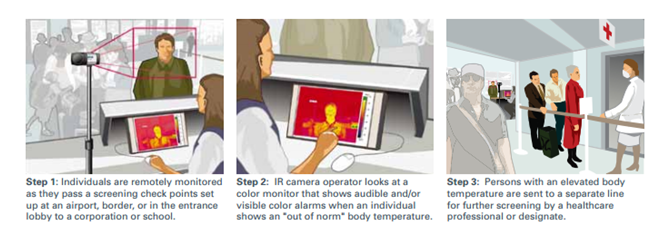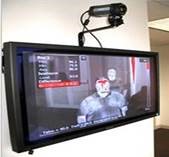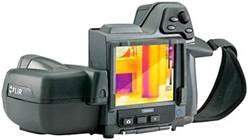The Ebola outbreak, which has spread from Guinea to Liberia, Sierra Leone and Nigeria, has killed at least 1,145.
The World Health Organization (WHO) has called for exit screenings on all travellers from affected countries. Thermal imaging has been introduced to detect elevated body temperatures which can diagnose high fever a common symptom of the Ebola Virus.

Checks at airports, sea ports and major land crossings are being introduced, Several airlines have already stopped flying to Guinea, Liberia and Sierra Leone. BBC News
REUTERS (2014) has stated Asia on alert with thermal cameras, doctors as Ebola declared global risk.
Thermal Imaging Equipment Used For Detection
– FLIR A320 Tempscreen 320×240 resolution designed to deliver accurate Thermographic imaging and repeatable temperature measurements in a wide range of automation applications with a thermal sensitivity of 50mK at 30°C.
(This thermal imaging camera was specifically designed to detect elevated body temperature and was introduces when the swine flu epidemic was at its height).

– FLIR T420/440 handheld Thermal Imaging camera offers comparable resolution with the A320 at 320*240 pixels. In addition thermal sensitivity is improved, 45mK at 30°C over the A320 and it is packaged in a portable hand held unit.

Key facts
- Ebola virus disease (EVD), formerly known as Ebola hemorrhagic fever, is a severe, often fatal illness in humans.
- EVD outbreaks have a case fatality rate of up to 90%.
- EVD outbreaks occur primarily in remote villages in Central and West Africa, near tropical rainforests.
- The virus is transmitted to people from wild animals and spreads in the human population through human-to-human transmission.
- Fruit bats of the Pteropodidae family are considered to be the natural host of the Ebola virus.
- Severely ill patients require intensive supportive care. No licensed specific treatment or vaccine is available for use in people or animals.
